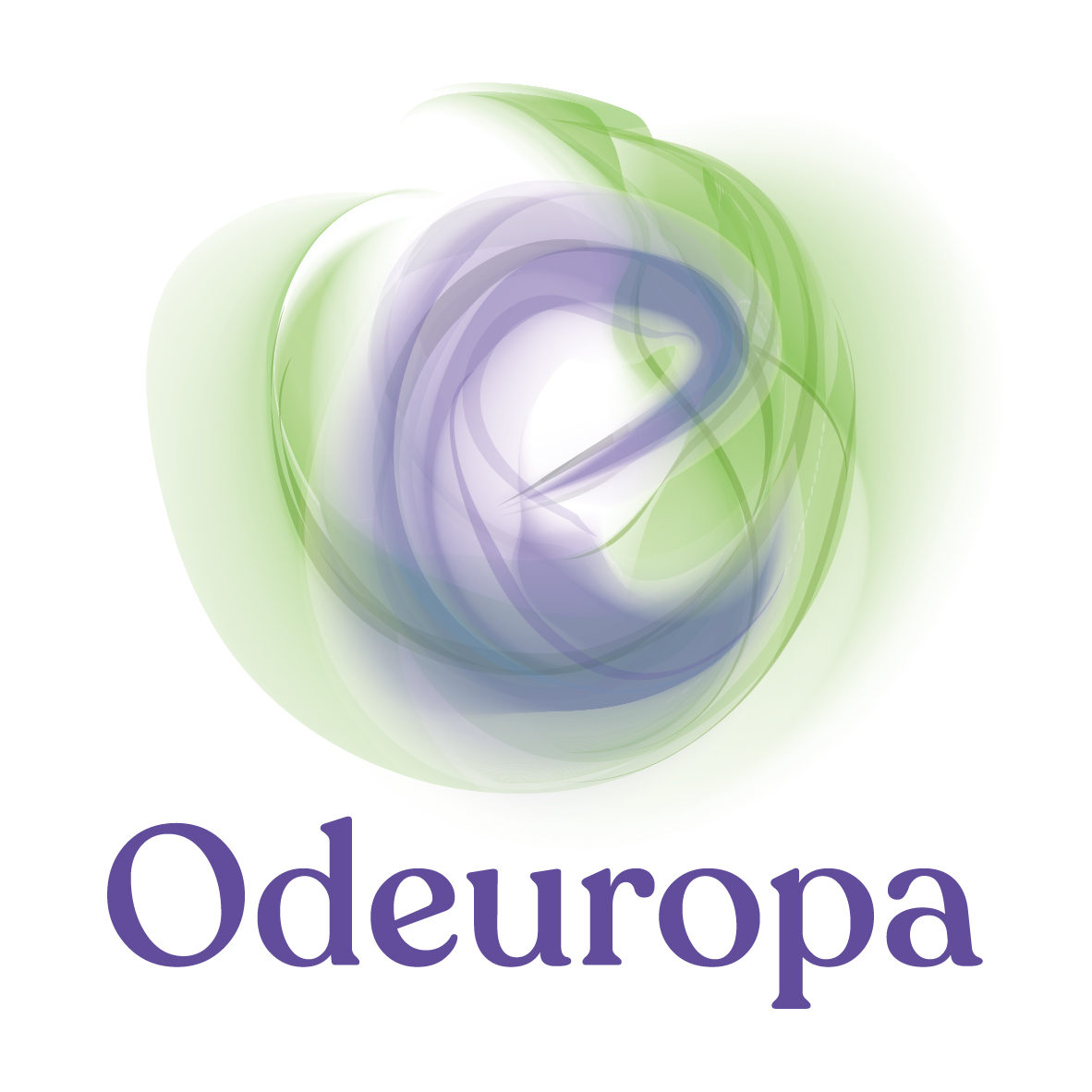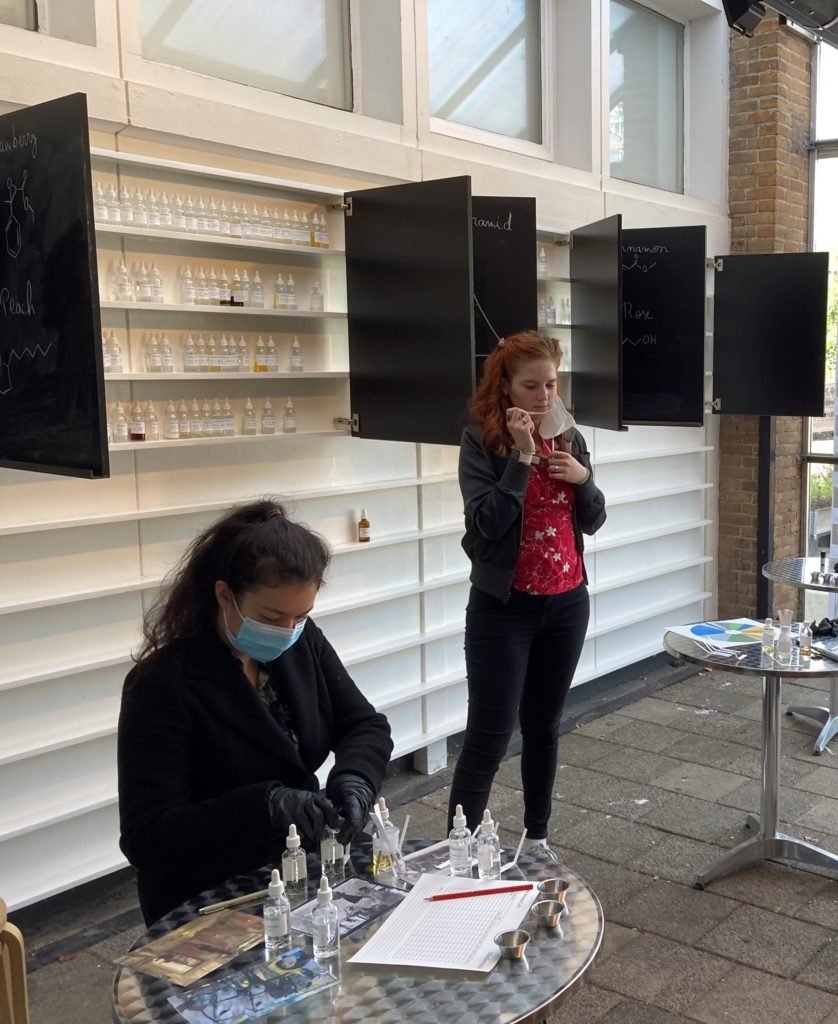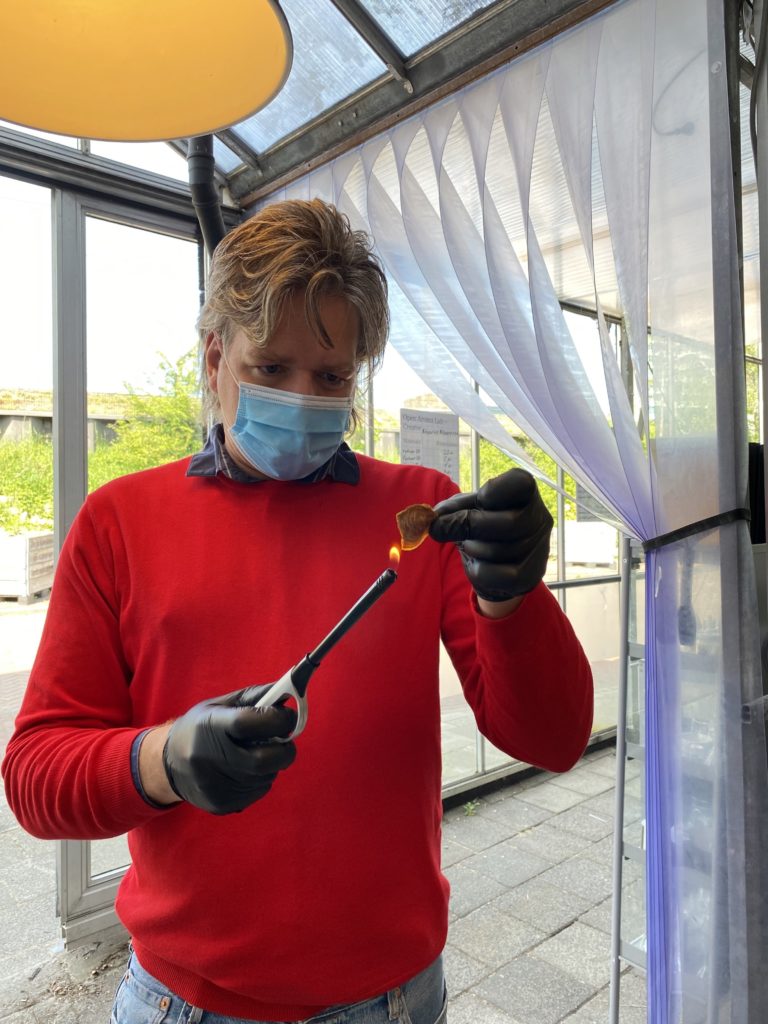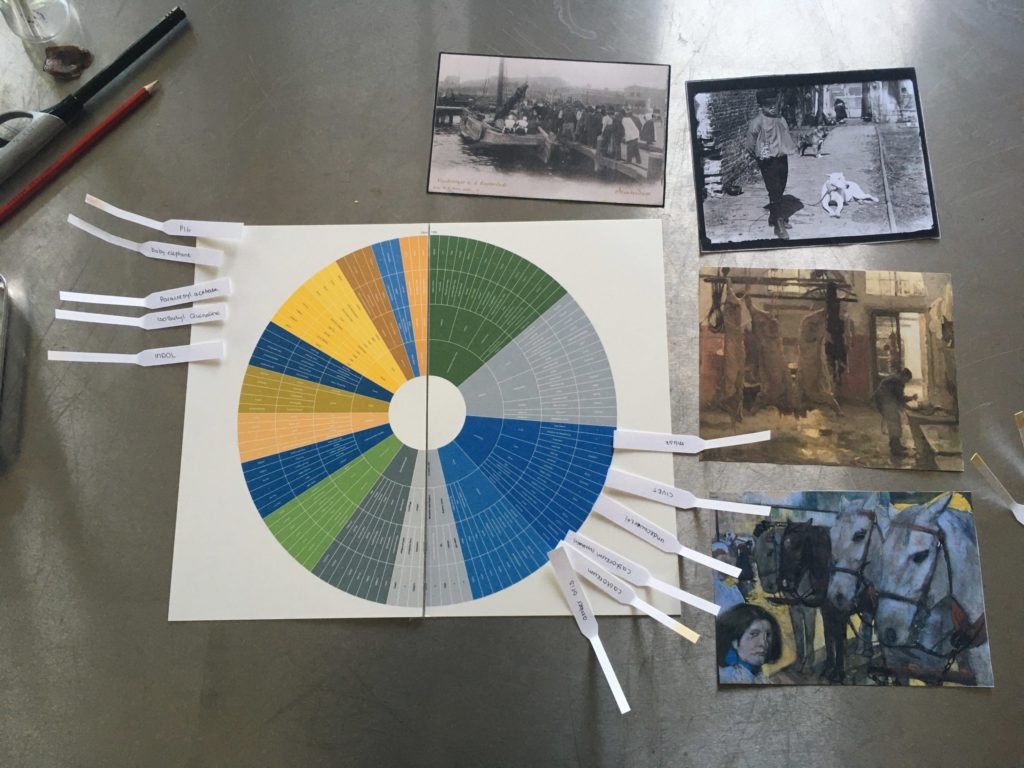This month, a few members of the Dutch Odeuropa team went to Mediamatic’s Aroma Lab in Amsterdam in search of historic scents. Odeuropa Trainee Sofia Ehrich has spent her traineeship working with Caro Verbeek detecting visual representations of scent in historical artworks, also called olfactory iconographies. Some of these olfactory iconographies were integrated into Odeuropa’s “Nose First art historical odour wheel.” You can view the wheel, which is a work in progress, below. Odeuropa Trainee, Jenna The, kicked off her traineeship with this smell session. She is currently researching the smell of animals in nineteenth-century Amsterdam and enjoyed how easy the odour wheel made it to navigate the overwhelming amount of scents found at Mediamatic.
This blogpost documents Sofia and Jenna’s perspectives of their experience at the Aroma Lab and aims to highlight the importance of not only viewing historical depictions and reading historical texts which reference scent, but how smelling those scents can add another level of cognition and understanding of the past.
Sofia:
For my trip to Mediamatic’s Aroma Lab, I wanted to connect the olfactory iconographies I have been researching throughout my traineeship to actual smells. I have become familiar with detecting depictions of smell, however being able to connect this to a physical smell was still lacking. Using the “Odeuropa Art Historical Scent Wheel,” I sniffed many smells but here I will discuss my discovery of the ‘resinous’ and ‘roots’ category.
Resinous:
Resins come from plants or trees and have been historically used in religious practices for incense burning. By referring to the scent wheel, I explored the making of the Tabernacle, in which resins play a prominent role. The nose-first scent wheel connected this Biblical story with galbanum but with further research, I was also led to Frankincense and onycha, while the verse from the Book of Exodus specifically instructs a recipe for the making of the Jewish Tabernacle: “Then the Lord said to Moses, ‘Take fragrant spices—gum resin, onycha and galbanum—and pure frankincense, all in equal amounts.’” One of these listed ingredients, onycha, which comes from the shells of sea snails, was specially brought out by Frank Bloem. To let off its scent, he lit it on fire. All three of these scents were similar in their thick and dense feeling through the nostrils and at the same time, their smokey qualities provide a cleansing feeling to the air which I think perfectly reflects their religious significance.
Roots
Spikenard (Nardostachys jatamansi) originates from a flowering root and is known for its affiliation with the divine. Spikenard plays a prominent role in depictions of Mary Magdalene and Mary of Bethany, who are often depicted with an ointment jar filled with the scent. This scent was particularly striking for me as it took me back to walking through the canyons in my home state of California: wet, healthy soil, slightly spicy and fresh.
Jenna:
If I were to describe my experience at the Aroma Lab in one word, I would say it was surprising. The animalistic category on the art historical odour wheel led me to smell musk, civet and castoreum. In addition I smelled undecavertol and para-cresyl acetate, which are part of the smell of horses, and pig smell and baby elephant smell, which Frank had made himself.
My first reaction to the smells was repulsion, which changed my perspective of animal smells. Before the smell session I associated animal smells mostly with farm scents, which I do not perceive as bad. But now that I actually smelled the animal odours up close, I discovered that most of them were actually penetrating and salty. Civet in particular struck me, as I did not like the smell, whereas it used to be appreciated and used in perfumes. Even though this substance was only used in very low concentrations in perfume making, it did make me aware that the perception of smell is culturally determined. While twenty-first century me was repelled by it, nineteenth-century me might have treasured the smell.
Not only does the perception of odours change, but I also learned that smells themselves can change too. Frank let us smell the scent of a baby elephant, which differs from the smell of grown-up elephants. This made me realise that in my research, I do not only have to distinguish the smells of different animals, but also take into account that the same animals can smell differently at different stages in their lives.
Conclusions:
Our experience at Mediamatic’s Aroma Lab was not only fun and educational, but we also learned a few valuable lessons about working with scent, a volatile medium which is often difficult to recall from memory. We both wished we would have better documented our perception of the scent before, during, and after we smelled it. We also feel that since most individuals are not well trained when it comes to historic smells, it is a valuable practice to continue to actively, deliberately and repeatedly smell things to become more familiar with and recognize these scents in the future.






